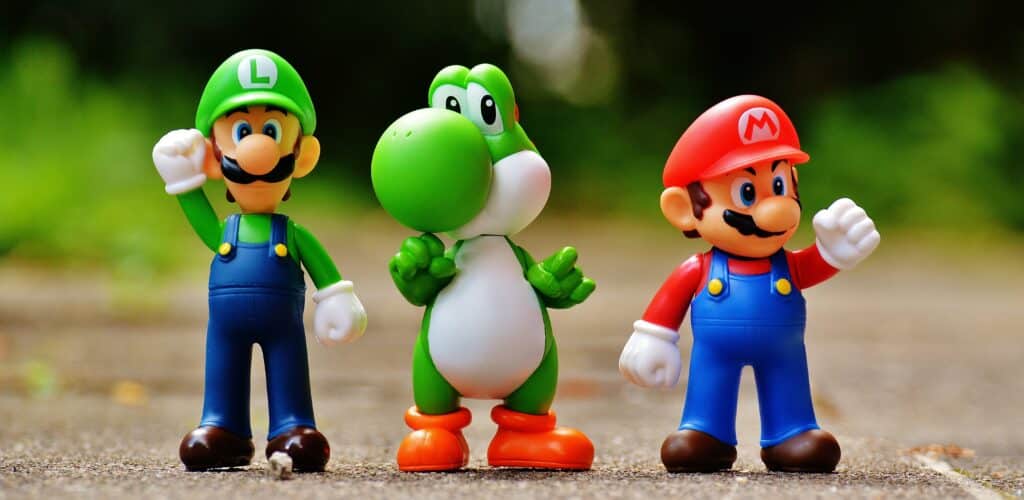3D Character Design
Achieve outstanding 3D models and prints with the assistance of Blender, Zbrush, and Maya.

Our tutors graduated from top universities







Overview
Customised curriculum
We'll find a tutor who can make sure you're prepared for the A-Level Chemistry exam with customisable lessons catered to fit your needs.
Flexible
Take lessons only when you need them—as little or as many as necessary until you feel confident.
Private lesson
No need to accommodate other students. Learning is customised your perfect pace and difficulty so you are always improving.
About ZBrush and Autodesk Maya
About ZBrush:
ZBrush, developed by Pixologic, is a leading software for 3D sculpting and character design. It’s renowned for its user-friendly interface and offers a wide range of features, making it indispensable for tasks, from simple character sketches to complex environmental designs. One of its standout features is its ability to handle high-resolution 3D modeling with up to a billion polygons, allowing for exceptional attention to detail, including skin creases and fabric textures. ZBrush also integrates well with other 3D design platforms and boasts advanced painting tools that mimic real brush strokes, enhancing natural texturing techniques.
About Autodesk Maya:
Autodesk Maya, produced by Autodesk, is a comprehensive platform for 3D modeling, animation, and rendering, widely used in the film and gaming industries. What sets Maya apart is its high level of customization, allowing users to tailor the workspace to their specific needs, from tool arrangement to interface layout. In the animation domain, Maya offers a powerful set of rigging and animation tools, enabling the creation of complex and fluid animations with precision. Additionally, Maya excels in particle and fluid simulation, making it a top choice for visual effects artists. Its compatibility with other Autodesk products and extensible plugin architecture ensures seamless integration into various design and animation workflows.
Both ZBrush and Autodesk Maya are considered industry standards, each offering unique features that cater to the specialized needs of 3D artists and animators. Whether you’re sculpting characters or animating dynamic scenes, these platforms provide the versatility and power required for high-level creative work.
Description
Embark on a journey into the world of 3D character design with our comprehensive course. Here, students will delve into the art of creating captivating 3D characters using fundamental drawing techniques, master the intricacies of sculpting and molding objects in the 3D realm, and develop a profound understanding of the 3D printing process. Upon completing the course, you’ll possess the skills needed to bring your imaginative ideas to life in the form of tangible, 3D characters. This course is an excellent choice for those aspiring to become animators, game designers, or digital artists, offering a strong foundation for further exploration and specialization in the dynamic field of 3D design and animation.
What you will learn
- Become proficient in 3D character creation.
- Apply fundamental drawing techniques effectively.
- Master object manipulation in a 3D setting.
- Gain a profound grasp of the 3D printing process.
Requirements
- Ages 12 – 18
- Interested in character creation and sculpting
- Naturally creative and enjoy hands-on work
Student FAQs About 3D Character Design
In the realm of 3D character design, “topology” is all about how the polygons are strategically placed on the model’s surface. It’s a crucial concept because it wields a tremendous influence over how your character animates, especially when it’s in motion or changes shape. You see, having well-optimized topology is like the secret sauce for achieving those buttery smooth and incredibly realistic character animations. It’s the unsung hero that truly elevates the quality of your design.
Think of accurate proportions in 3D modeling as the cornerstone of believability. They’re absolutely vital because they determine whether your character appears realistic or leans towards a more stylized look. Incorrect proportions can totally throw off the audience’s suspension of disbelief, especially when you’re creating human or animal characters. So, nailing those proportions is like the first step in the recipe for creating characters that feel genuinely authentic.
Rigging in 3D character animation is like giving your character a digital skeleton. It’s the magic behind achieving movements that look and feel incredibly lifelike. Without effective rigging, your character would move like a stiff mannequin, which is a big no-no in the world of animation. So, it’s safe to say that rigging is the behind-the-scenes hero that brings your character to life.
The level of detail in a 3D character is a bit like a customizable feature; you can dial it up or down depending on what you need. If you’re creating characters for a video game, you’ll want to be mindful of polygon count for efficient real-time rendering. On the flip side, characters in films can get incredibly detailed since they don’t have the same real-time rendering constraints. So, it all boils down to the intended use, and that’s the compass guiding your level of detail.
Lighting in 3D character design is like the master painter’s brushstroke. It does way more than just illuminate the character; it highlights its form and texture, setting the mood and atmosphere for the scene. Whether it’s soft, warm lighting for a cozy moment or dramatic, contrasting lighting for intensity, it’s like the unsung hero that shapes the very emotions your audience experiences.
The 3D character design process is like a well-choreographed dance with multiple stages. It all kicks off with the creation of concept art, where the character’s personality and look take shape. Then, it’s a step-by-step journey through 3D modeling, where you build the character’s 3D form, texturing for adding visual richness, rigging for lifelike movements, and finally animation to bring it all to life. Each stage has its own unique playbook to ensure the character aligns with creative and technical objectives, from video games to animations and beyond.
Texturing and shading in 3D modeling are like the finishing touches on a masterpiece. They add layers of realism and visual appeal by defining material attributes like skin texture, hair, and clothing fabrics. These techniques are what make your character feel tangible and alive, drawing viewers into your 3D world. So, they’re essentially the icing on the 3D modeling cake, making your character look good enough to reach out and touch.
Looking for other coding tuition?
How it works
1
Request a tutor
Let us know your goals and age range. We'll figure out a plan to help get you there.
2
Match with a tutor
You'll get a tutor based on your needs and goals, or you can request a specific tutor.
3
Start a free trial
Experience a free trial lesson with your new tutor and see if your learning style matches.
4
Keep it up!
If everything went well, sign up to keep going! You can choose the pacing of the lessons
1Request a tutor
Let us know your goals and age range. We'll figure out a plan to help get you there.
2Match with a tutor
You'll get a tutor based on your needs and goals, or you can request a specific tutor.
3Start a free trial
Experience a free trial lesson with your new tutor and see if your learning style matches.
4Keep it up!
If everything went well, sign up to keep going! You can choose the pacing of the lessons
Need more info?
Let's talk.
Leave your phone number, and we’ll call you back to discuss how we can help you.


